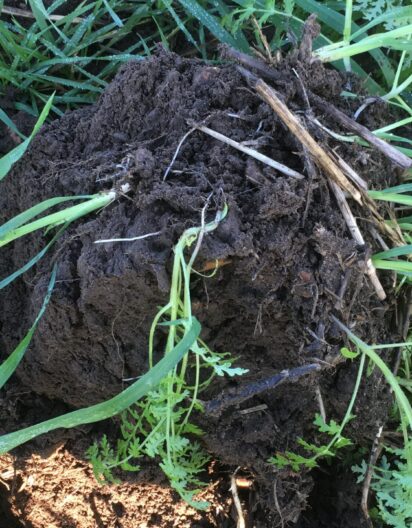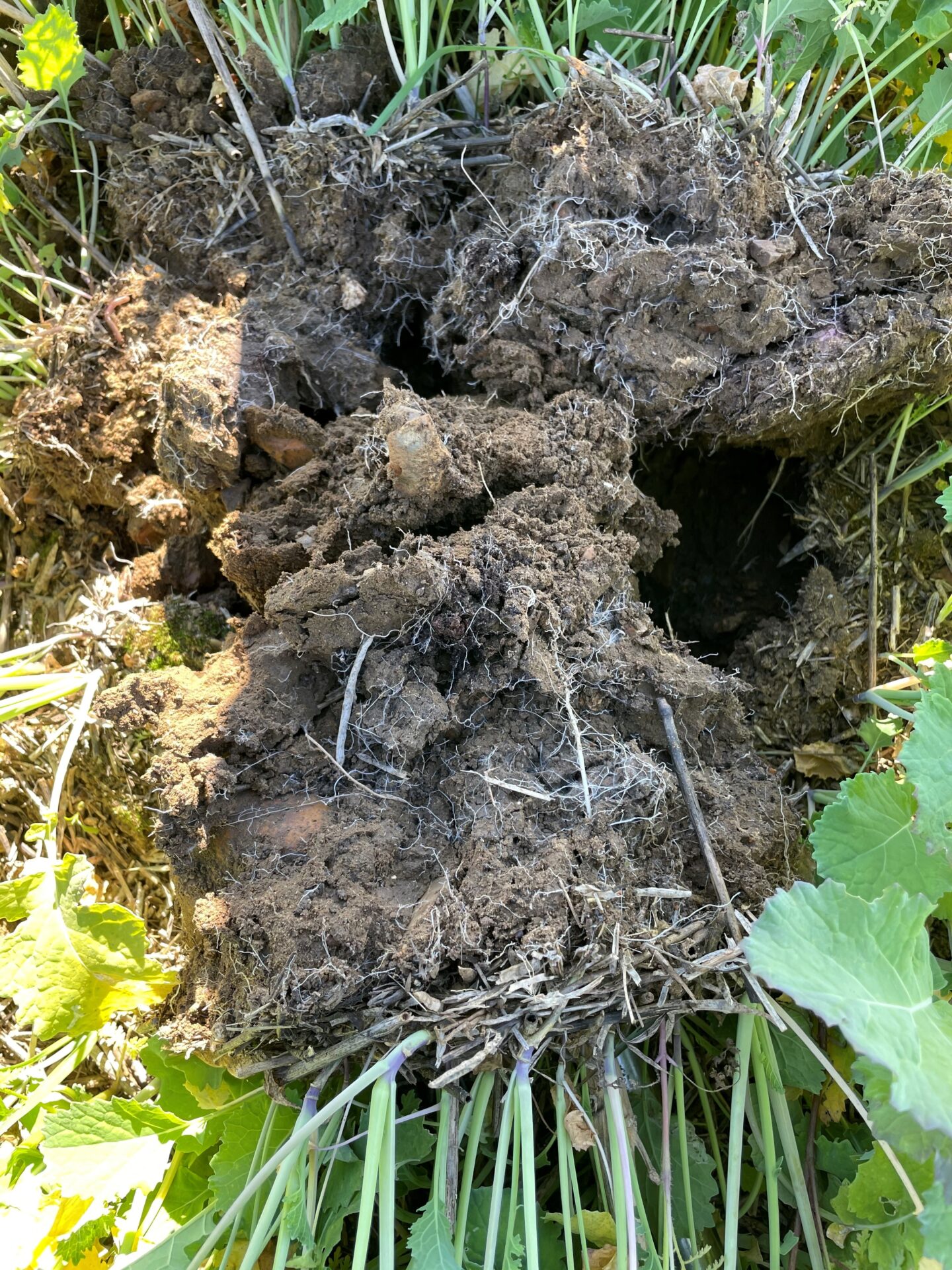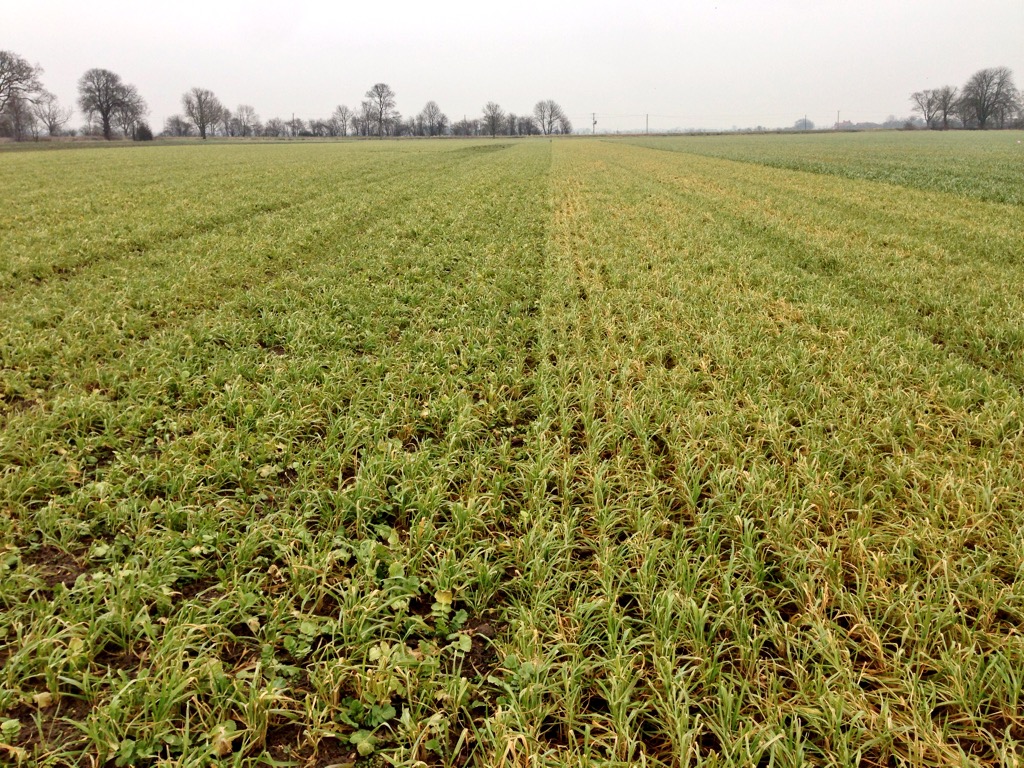Soil Health
We understand that our soil is our most important asset and it must be cared for.
Soil plays a vital role in helping offset the effects of climate change by capturing CO2 from the atmosphere and storing it as carbon.

Soil health is a real passion for the Farms Manager, and he describes the soil “like a compost”. If you were to plant a seed at home, you would head to the garden centre and buy a rich compost. Our aim is to make our soils just as rich and healthy, trapping CO2 and leaving the environment in better shape.
To do this, we practice a form of farming known as “regenerative agriculture”.
Soil health refers to the state of the soil. It is a correlation between the billions of living organisms, organic matter and soil structure.
Did you know that a single handful of soil contains more life than the entire human population of the plant earth?
The first thing that you’ll notice with a healthy soil when dug is the abundance of life – be it as large as an earth worm or as small as the threads of fungus growing within.
With our whole-farm approach to soil management, we are succeeding in improving the quality of our soils every year.
Machines and Operations
The Spade

Definitely the most important tool for understanding soil quality – in fact, every farm vehicle and tractor has one.
Before any key operations take place, the humble spade is used to evaluate suitability.
Cultivations

Where possible, we turn over next to no soil, with the aim to be eliminating all mechanical cultivations in the next 5 years.
Instead, we rely on the use of roots and organisms to carry out this work for us.
Controlled Trafficking

Over the entire farm, we operate a Controlled Traffic System (C.T.F) . This means that we are only ever driving across the same wheelings, resulting in reduced compaction.
To enable this to happen, all of our tractors and combine harvesters use GPS and auto-steer technology to guarantee that we are running to a 2cm accuracy, year after year.
Working With Crops
When a field is harvested, we try to remove only the grains and seeds, leaving the rest of the plant to naturally decompose. This adds to the carbon within the soil, which is the life source for all living organisms. The organisms then break this residue down, releasing vital nutrition for crops.
Cover Crops
Where possible, we aim to have a continuous green cover growing on our land. Between our crops that are destined to be harvested, we plant crops that are called “Cover Crops” to bridge the period of bare soil.
These cover crops are used to maintain and build soil structure by the action of their roots. We select different mixes of species to grow, depending on what rooting depth and function we require for that certain piece of land.
Another important role of the Cover Crop is extracting CO2 from the atmosphere. Plants take in the CO2 as they grow and then exude the Carbon from their roots as a food source for the soil biology.
In exchange, the soil biology breaks down plant matter within the soil – then releasing nutrition to feed the plant. This is called “carbon sequestration”.
By always maintaining a green cover as much as we can, we are helping to remove CO2 from the atmosphere for most of the year.
catch Crops
Catch crops are very similar to the cover crop, but are in the ground for a shorter period of time – usually as little as 6 weeks. Their main aim is to take up any free nutrition from the soil and store it away until the following crop is planted and can use it.
Catch crops reduce the risk of pollution through the form of leaching. They also have the benefits of the cover crops, but to a lesser extent.
Companion cropping
Within our combinable crops, we establish plants that aid the growing crop. They benefit the growing crop in different ways, depending on the species grown.
For example, they help by preventing pest attacks by confusing pests as to what crop is growing, or fixing nitrogen from the atmosphere for the intended crop.
Companion crops can also encourage beneficial fungi called mycorrhizal to grow, which acts like an extension of the plants roots. This means that it is able to access a far greater pool of nutrition.
Many of these companion crops are chosen for their frost sensitivity, so they naturally are destroyed from the combinable crop during the winter months, which reduces the need for pesticide use.

